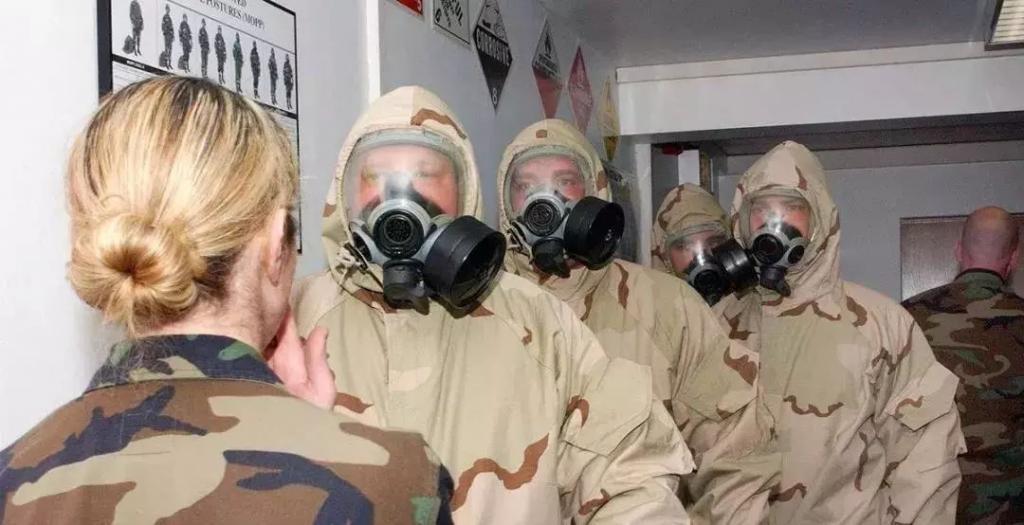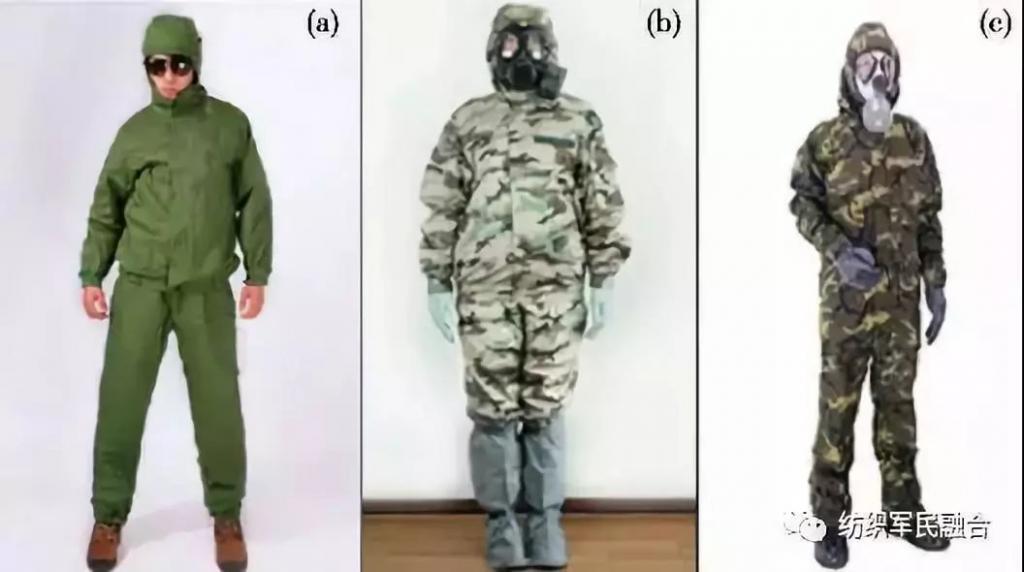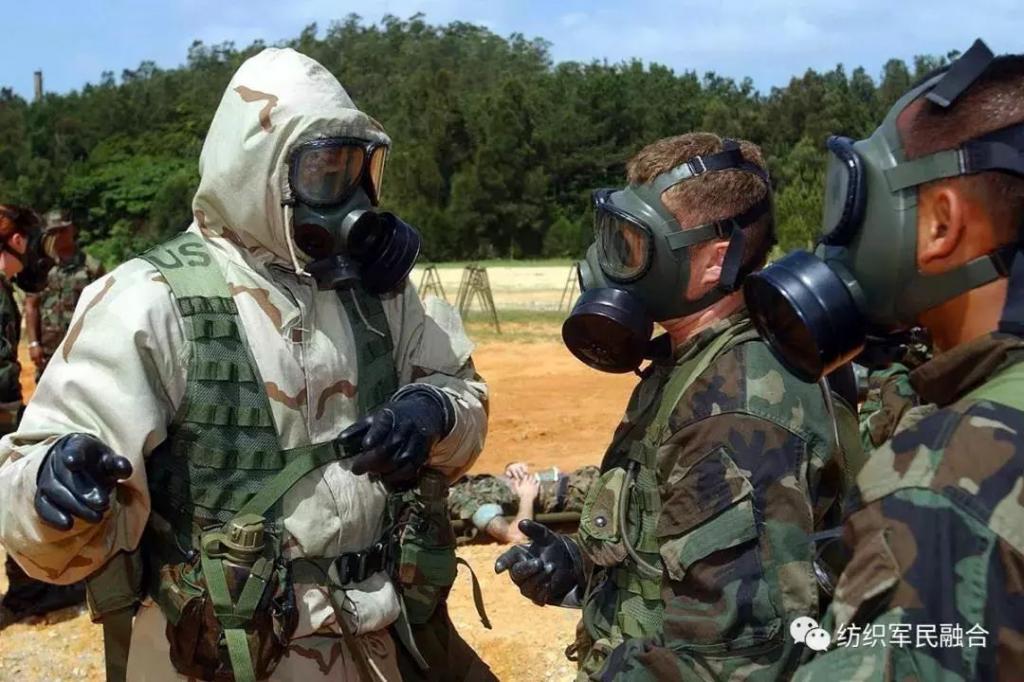Breathable anti-drug suits are a kind of skin protection equipment that can be used by military and civilians who can breathe air and moisture, but can prevent external toxic gases, mist-like poisons, bacteria and radioactive dust from harming the human body. It has many functions such as anti-virus, ventilation, heat dissipation, high temperature flame retardant, anti-detection camouflage, etc., which has significantly improved the physiological performance of the human body. The early breathable anti-drug suits originated in the United States in the 1920s. At that time, the US military used chlorinated paraffin to impregnate the uniforms on the military uniforms. The resulting absorbent protective suits reacted with the poisons and eliminated them. The adsorption of the poison has a strong selectivity, and the chloramide itself has a certain stimulating effect on the skin, the medicinal property is unstable, and the fabric has a certain corrosive effect, thereby affecting the service life of the garment. After nearly a century of development, countries have relatively mature ventilated anti-virus suits, most of which use activated carbon adsorption materials, but this adsorption-type materials also have no selective adsorption, poor protection against large toxic droplets, easy Problems such as secondary pollution. Therefore, in recent years, various countries have been committed to the development of new materials and technologies.

This paper summarizes the types, materials and performances of breathable anti-virus suits produced in various countries, summarizes the development history of breathable anti-virus suits in China, and introduces the latest research progress of several new materials and new technologies in the field of breathable anti-drug suits. In the future, China will provide constructive reference for the development of multi-functional, high-performance and comfortable protective equipment.
Development status of ventilated anti-virus clothing in developed countries
At present, the technology of breathable anti-virus clothing is mainly concentrated in developed countries such as Britain, the United States, Germany and France. Germany's BLÃœCHER is recognized as the world's most advanced breathable anti-wear fabric based on the protective material produced by Saratoga's patented spherical activated carbon technology. The comprehensive properties of the carbon hardness, bonding technology and fabric materials make the spherical activated carbon composite fabric have good mechanical properties, good heat dissipation, excellent protection and low heat stress. At the same time, the unique spherical activated carbon The bonding technology with the fabric can retain the effective adsorption of activated carbon by about 85%. The anti-virus suit is usually composed of two layers inside and outside. The outer layer is a high-flame-retardant cotton fabric which is water-repellent and oil-repellent. The inner layer is composed of activated carbon with a diameter of 0.5~1 mm bonded to the fabric in a dot shape. The fabric may be a polyamide fabric, a polyester fabric or a cotton fabric.

Protective clothing with Saratoga technology
The US Army Joint Service Light Integrated Integrated Protective Clothing (JSLIST) is a two-piece design with a waterproof, tear-resistant nylon and cotton-padded fabric blended on the outer layer. The lining material is based on the German SARATOGA technology, which is small in size. light weight, high durability, chemical and biological agents to provide unmatched protection effect.

US military joint service light comprehensive integrated protective clothing
There are many ventilated anti-virus clothing technologies in the UK. The products produced by different manufacturers are used by different arms in various regions and organizations around the world. One of the most famous is the ZORFLEX activated carbon cloth technology of Chemviron Carbon Company of the United Kingdom. The carbon cloth produced by this technology has the characteristics of light weight, excellent washing resistance, small physiological load and reproducibility. The excellent mechanical properties of carbon cloth make it possible to combine with a variety of fabrics. It is used as a nuclear biochemical (NBC) protective clothing and is equivalent to the physical comfort of ordinary combat suits. It is made of activated carbon fiber and polyester fabric, polyamide fabric or cotton fabric after post-treatment after flame retardant to achieve anti-toxic agent. The purpose of immersion is at the same time, it has many properties such as flame retardant, water repellent, oil repellent and camouflage.
The polymer-coated activated carbon technology (PEAC) in the United States is a relatively advanced technology, represented by LanxType I fabrics, whose outer layer is composed of nylon, cotton or blended fabric. The biggest advantage of this protective suit is that it is comfortable to wear, and its carbon particles have a strictly uniform size and good adsorption properties. LanxTypeI fabric protects against a wide range of toxic gases and liquids with excellent durability, breathability and flame retardancy. It has a low heat load and is soft and comfortable. At the same time, this series of fabrics has good flash protection performance and can be used inside the explosion-proof suit to provide NBC safety protection.
Development status of breathable anti-virus clothing in China
Early research on anti-chemical equipment materials in China mainly focused on special flannel and chemical impregnated carbon containing activated carbon charcoal. Figure a is China's 82 type breathable protective clothing (also known as FFF01 type anti-virus clothing), is the earliest developed breathable anti-virus clothing in China. The protective suit is made of waterproof cotton fabric and the inner layer is a special fleece containing activated carbon. The protective suit can be worn continuously for 8 hours at a temperature of 25 ° C, and does not adversely affect the heat dissipation of the human body when worn at 35 ° C for 4 hours. It has similar protective properties and breathability as the British MKGIII protective clothing and the Taiwanese 77 carbon fiber protective clothing. Due to the defects of FFF01 anti-virus clothing in camouflage and flame retardant, China developed the FFF02 anti-virus suit in 1994. The outer layer material is soaked by special silicone oil, which has certain flame retardant properties to the flame, as shown in Figure b. Shown.

The carbon-coated fiber anti-poisoning technology with independent intellectual property rights developed by Beijing Bangwei Gaoke Special Textile Co., Ltd. and the Institute of Chemical Defense is the first in the world, and its key technical indicators have reached the world advanced level. The anti-poisoning inner layer material made of carbon-doped fiber has the characteristics of light weight, good hand feeling, superior anti-virus performance and low cost, and has certain flame retardant properties. The comprehensive protective performance, air permeability and wearing comfort of the carbon-coated fiber anti-virus clothing are far superior to that of the carbon-coated fabric. The carbon-coated fiber anti-poisoning technology solves the problems that the traditional anti-virus suit is easy to fall off and the physiological comfort is poor. The inner layer material is uniformly mixed into the nitrile chloride spinning solution by activated carbon powder, and is made by spinning, spinning, weaving and the like. The anti-poison suit is softer in breathability and softness than the FFF02 type anti-virus suit. In terms of degree, there is a great improvement. Compared with the mainstream SARATOGA and ZORFLEX materials in the world, it has a great cost advantage while meeting anti-virus performance.

In general, in recent years, China's breathable anti-virus suits have improved breathability, softness, comfort and protective performance, especially the breathable anti-virus suit with activated carbon fiber cloth or felt as the adsorption layer. In recent years, relevant units in China have carried out research on activated carbon fiber composite fabrics. For example, activated carbon fiber composite fabrics developed by Jiangsu Tongkang Carbon Fiber Technology Group are based on viscose -based activated carbon fiber cloth or felt as composite layer and cotton fabric. Cheng, the fabric has high adsorption performance, light weight and good anti-virus effect. It has been used by the Pakistani army; the activated carbon fiber composite fabric developed by Shanghai Tianxiang Textile Technology Co., Ltd. has high tensile strength and washability. The activated carbon fiber composite fabric prepared by adopting 100% polyacrylonitrile -based activated carbon fiber cloth as the adsorption layer and cotton cloth, non-woven fabric or chemical fiber cloth as the base fabric is comfortable, moisture-permeable, ventilated and has small physiological load. , flame retardant performance, blocking heat radiation and nuclear dust, can be used for purification and regeneration, and can also extend the battlefield activity time.
Polyester Briefs,Polyester Boxer Briefs,Mens Polyester Underwear,Mens Polyester Boxers
Liya Garment Limited Company , https://www.liyamenunderwear.com